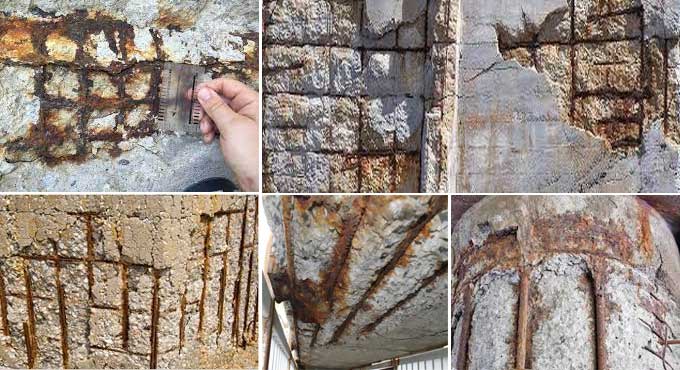
Getting Concrete Corrosion under Control in Construction: The Causes, the Solutions

There are many threats to concrete slabs, whether they are foundations, driveways, patios, or pools. One of the most common is soil erosion. Concrete surfaces can become cracked and sunken over time or all at once as the soil erodes.
Plumbing Leaks
A leak in a household plumbing line can also cause soil erosion. When even a trickle of water seeps through the fill, air pockets are formed, causing cracks in the slab and the slab to crumble. Due to its insidious nature, this type of soil erosion can lead to serious concrete corrosion.
Chloride Diffusion
Chloride diffusion is one of the main causes of corrosion in concrete. As a result of exposure to de-icing salts or seawater, chloride can penetrate concrete and reach reinforcement externally. Additionally, it can be found in concrete ingredients internally. Natural passivation protects steel reinforcement at PH levels of 13 to 13.8.
De-passivation of reinforcement begins when a certain amount of chloride reaches reinforcement in the presence of moisture and CO2. When the reinforcement's PH level drops below 9, concrete corrosion begins.
When CO2 and moisture are present, chloride diffusion will cause reinforcement corrosion to some extent. A self perpetuating cycle results when concrete cracks due to corrosion, allowing moisture, CO2, and chloride to penetrate more areas. If not addressed, it grows bigger over time.
Natural Calamity
Natural disasters such as floods or mudslides can cause drastic soil erosion, completely wiping out supportive soil. Talk to Lift Up Concrete if your concrete is sinking, cracking, buckling, crumbling or has any other structural or surface problems. The slab can be repaired using restoration methods, as well as preventing further soil erosion.
Drought
When a severe drought occurs, the soil shrinks and the concrete becomes unsupported. The concrete above cracks and buckles when trees and shrubs start spreading their roots farther than normal in search of water.
Inadequate Soil Compaction
To ensure that concrete will be poured on an even grade, contractors usually bring in truckloads of fill soil when pouring a foundation, driveway or any other large concrete structure. For the concrete to be poured on a solid platform, the fill soil should be compacted firmly.
While experienced contractors realize the importance of solid compaction, they sometimes miss the mark. As long as a foundation is not adequately supported, it can take many years for the underlying soil to settle and release all air pockets. There are times when cracks in concrete slabs are inevitable, but the problems are compounded when compaction is not paid enough attention.
Bad Landscaping
A landscaping expert can help you divert water far away from your concrete slab if your home location is in a valley and pools. The constant high moisture content in the soil will eventually cause erosion when water runs alongside the slab or drains nearby.
Drainage
Each home requires a suitable drainage system that includes gutters and downspouts that lead away from the building, no matter its location. The constant water pooling will damage your foundation and any other concrete surfaces nearby via gradual soil erosion.
Repair & Prevention Method of Concrete Corrosion
Controlling corrosion and mitigating its effects has many advantages. As a result, assets have a longer lifespan. Another advantage is the reduction of maintenance time and costs. A reduced maintenance requirement provides a more efficient asset and improves the asset's environmental sustainability.
To learn more, watch the following video tutorial.
Video Source: Screening Eagle Technologies
To fully expose the rusted reinforcement and move the contaminated concrete away from the steel, the cracked and degraded concrete must be removed to a depth of 20 to 30 mm behind the reinforcing bars.
It is necessary to remove all corrosion prone materials and to treat or replace the steel if it has corroded. The surface is then treated with concrete repair mortars. For improved adhesion and resistance to contamination, modern repair mortars contain polymers.
It is common to use coatings in conjunction with patch repairs in order to reduce advancing carbonation and chlorides.


